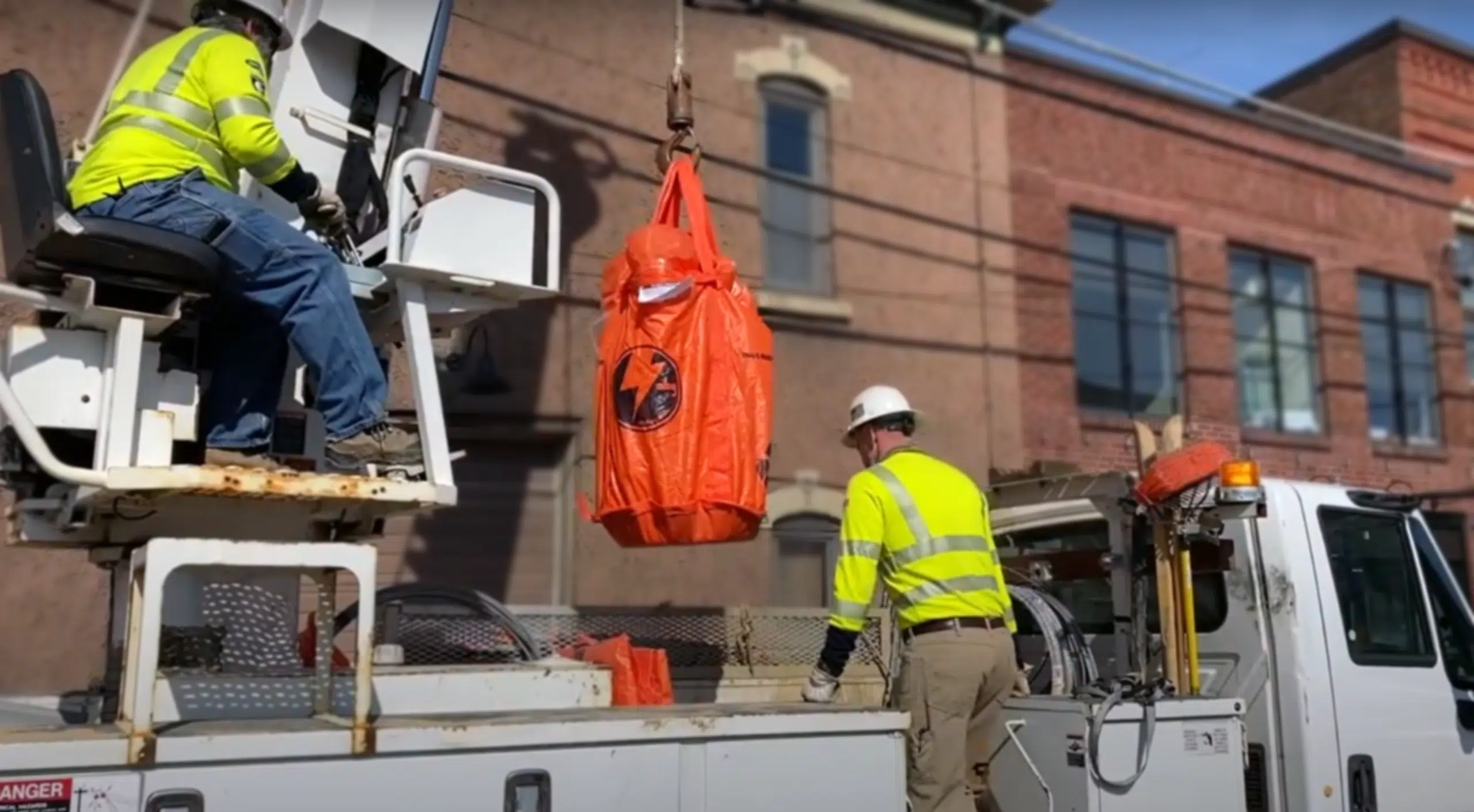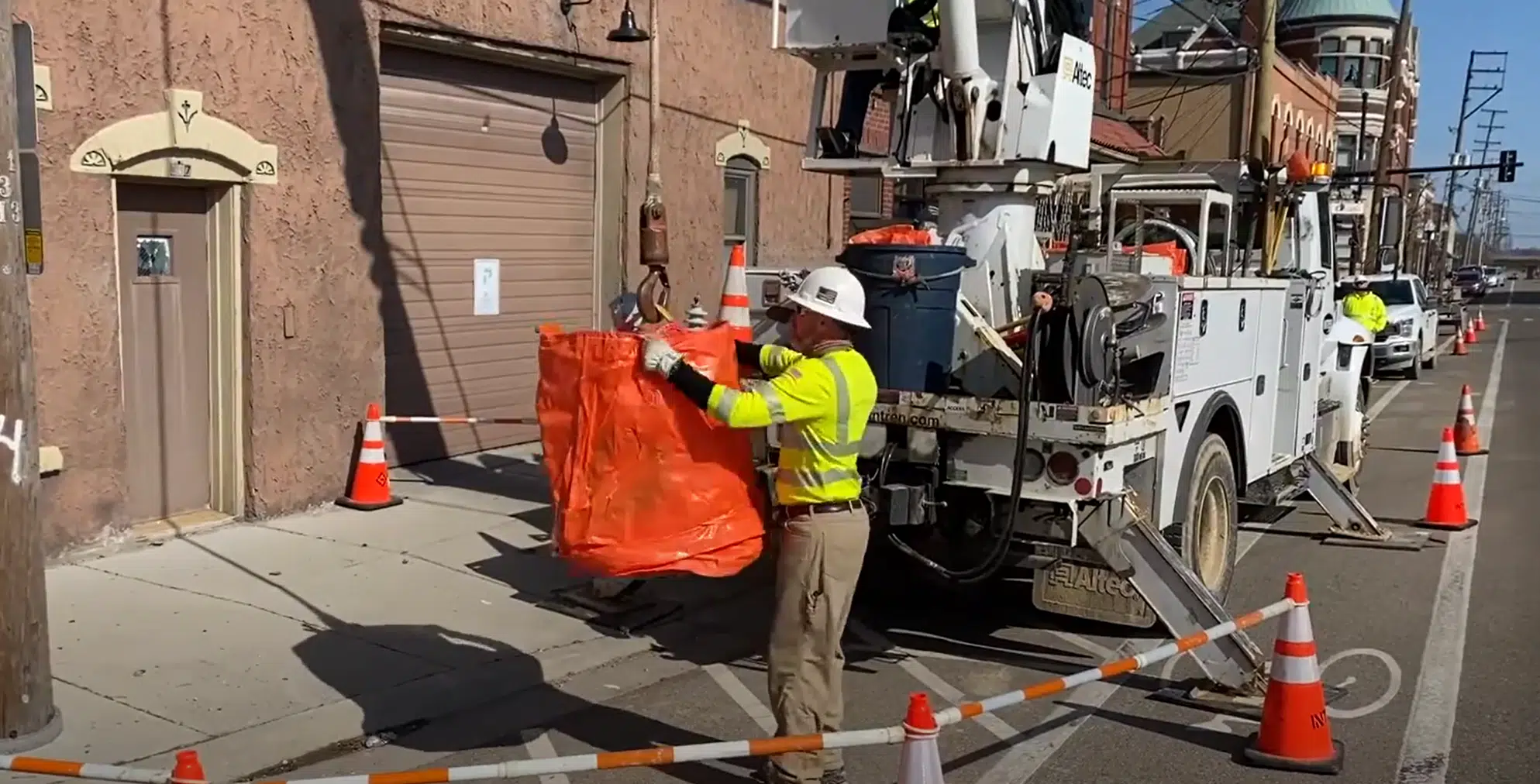0
Need help?
Customer satisfaction is our priority. Whether you have questions about our sustainable containment solutions, need help with an order, or require assistance finding the right product for your needs, we’re here to help.
Customer satisfaction is our priority. Whether you have questions about our sustainable containment solutions, need help with an order, or require assistance finding the right product for your needs, we’re here to help.
Utility companies and electrical service providers face a critical responsibility: keeping transformer oil safely contained to protect the environment, maintain compliance, and avoid costly fines. Transformer spill control bags are one of the most effective solutions available today, offering a simple yet powerful layer of protection against leaks in the field. Whether you’re managing pole-mounted systems, ground-based transformers, or transporting equipment, the right containment solution ensures safety, compliance, and operational reliability.
This page explores everything you need to know about choosing transformer spill control bags, including how they protect against oil leaks, what factors utilities should evaluate before selecting them, and how long these bags typically last in the field. Along the way, we’ll also touch on related tools—such as transformer oil spill kits, PCB containment solutions, and DOT-compliant containment bags—that complement your overall approach.
Transformers are essential components of modern electrical infrastructure, but they also present environmental risks when filled with insulating oil. Even the smallest leak, if left unchecked, can gradually cause significant damage. A few drops may not appear serious in the moment, but over time those leaks can accumulate, contaminating soil, staining pavement, or even running off into waterways. Cleanup of such contamination is both costly and time-consuming, and in many cases, fines from environmental agencies can far exceed the cost of preventive measures.
This is where transformer spill containment solutions come into play. Specifically, transformer spill control bags are designed to act as a proactive safeguard against oil leaks. They either wrap directly around the base of a transformer or sit beneath it, creating a containment zone that captures oil before it ever has the chance to reach the environment. By catching spills at the source, these bags act as the first line of defense, preventing small problems from escalating into full-scale environmental incidents.
For utility companies, protecting against oil leaks is about more than compliance—it’s about ensuring public safety and protecting community trust. A single leak that reaches a sidewalk or roadway can create slip hazards, damage nearby landscaping, or even expose the public to harmful chemicals. In addition, the utility may be held financially liable for damages, remediation, and regulatory penalties.
Utility transformer containment bags solve this problem by creating a controlled environment around the transformer. For ground-based equipment, the bags sit directly beneath the unit, catching any leaks or drips before they spread. For pole-mounted systems, which present a unique challenge, specialized pole-mounted transformer oil spill bags are available. These are engineered to hang securely beneath the transformer, intercepting any oil that would otherwise drip onto soil, streets, or sidewalks below. This ensures not only environmental compliance but also public safety in heavily trafficked areas.
Spill containment bags are designed for proactive, long-term protection, but they are not the only tool utilities should rely on. Emergencies can and do happen. A sudden equipment failure or unexpected surge in oil loss may overwhelm even the best containment bag.
To address this, transformer oil spill kits are used in tandem with containment bags. A spill kit typically includes absorbent pads, booms, protective gloves, and heavy-duty disposal bags. In the event of a spill that exceeds the containment capacity, crews can deploy these tools immediately to contain and clean up the incident. Together, transformer maintenance containment bags and transformer oil spill kits create a layered system: the bag handles everyday leaks, while the kit provides a rapid-response solution for larger emergencies. This dual approach not only protects the environment but also demonstrates due diligence to regulators.
Another important consideration for utilities is the management of older transformers that may still contain polychlorinated biphenyls (PCBs). Although PCB use has been phased out, many legacy systems remain in service, and these substances are tightly regulated due to their toxicity and persistence in the environment.
PCB transformer containment solutions are specifically engineered to deal with this challenge. These bags are manufactured using materials that can withstand prolonged exposure to hazardous chemicals without degrading. More importantly, they are tested to meet Environmental Protection Agency (EPA) guidelines for safe handling and containment. By using these specialized containment options, utilities reduce liability, protect workers, and ensure that toxic substances are kept securely isolated.
Ultimately, transformer spill control bags are more than just accessories—they are critical components of a broader environmental compliance strategy. When paired with other products like spill kits, DOT-compliant transformer containment bags for transport, and PCB-specific solutions, they help utilities build a system of layered protection that addresses risks at every stage of a transformer’s lifecycle.
By intercepting leaks before they cause harm, these containment solutions protect natural resources, maintain regulatory compliance, and reduce the likelihood of costly cleanup efforts. For utilities seeking to operate responsibly and sustainably, transformer spill control bags are an essential investment in both environmental stewardship and operational peace of mind.


Choosing the right spill containment solutions for transformers requires more than just ordering a standard product. Utilities must consider several factors to ensure the chosen transformer spill control bags deliver maximum effectiveness and durability.
Not all transformers are alike. The oil volume they carry can vary widely, which directly impacts the type of containment bag required. Utilities should match the bag’s capacity to the transformer’s potential spill volume to guarantee adequate protection.
Spill containment bags are often exposed to the elements. Sunlight, rain, snow, and temperature fluctuations can impact their longevity. When selecting transformer maintenance containment bags, utilities should prioritize materials that resist UV damage, water intrusion, and wear from harsh climates.
Crews are often pressed for time when servicing transformers. Bags should be designed for fast setup, minimal tools, and straightforward maintenance. Options that allow easy replacement or emptying of captured oil make fieldwork more efficient.
Utilities must meet stringent standards for spill prevention. Using environmental compliance transformer bags ensures that installations align with EPA and state-level requirements. For transformers being transported, DOT-compliant transformer containment bags are necessary to satisfy Department of Transportation guidelines.
The best approach is layered protection. By pairing containment bags with transformer oil spill kits, utilities can manage both everyday leaks and sudden spill emergencies. This layered strategy also satisfies regulators who expect utilities to demonstrate preparedness.

One of the most frequent questions utility providers ask is: How long will transformer spill control bags last once they are installed in the field? The answer is not always the same for every utility, because longevity depends on a variety of factors, including environmental exposure, maintenance practices, and the specific type of transformer being protected.
In general, high-quality transformer spill containment bags are engineered to last for multiple years under standard operating conditions. Manufacturers design these products with durability in mind, using materials that resist tearing, weathering, and chemical degradation. However, just as with any piece of field equipment, performance and lifespan are influenced by how the bags are used and maintained. Utilities that implement routine inspection and care programs will usually see significantly longer service life compared to organizations that take a “set it and forget it” approach.
The good news is that with proper selection and upkeep, transformer maintenance containment bags can provide reliable service for years, giving utilities consistent protection against oil leaks and the peace of mind that comes with continuous environmental compliance.
While general expectations provide a useful benchmark, utilities must evaluate specific factors that directly impact how long transformer spill control bags will last in their particular applications.
Field conditions play a major role in the wear and tear of containment bags. Transformers often operate in outdoor environments where equipment is exposed to intense sun, heavy rain, snow, and fluctuating temperatures. Prolonged UV exposure can weaken materials, causing them to crack or become brittle. Selecting transformer spill containment solutions made with UV-resistant fabrics is one of the most effective ways to extend the useful life of the bag. In regions with extreme climates, utilities may also need to replace bags more frequently to maintain effectiveness.
Routine maintenance is another significant factor. Bags that are regularly inspected and emptied of collected oil tend to last much longer than those left unattended. When oil accumulates unchecked, it can saturate materials and accelerate degradation. Maintenance teams should schedule inspections alongside normal transformer servicing to identify early signs of wear, damage, or overfilling. By keeping bags clean and clear, utilities not only maximize performance but also extend the overall lifespan of the containment system.
The type of oil contained within a transformer also affects bag durability. Some transformer oils are more corrosive or chemically aggressive than others, potentially compromising the containment material over time. Utilities should always confirm compatibility between the containment bag and the specific oil in use. This step ensures the bag maintains integrity even after prolonged exposure, reducing the need for premature replacement.
Utilities managing legacy equipment face an additional consideration: polychlorinated biphenyls (PCBs). Though largely phased out, PCBs are still present in some older transformers and are subject to strict EPA regulations due to their toxicity. PCB transformer containment solutions are specifically designed to withstand the unique chemical challenges posed by these substances. Bags engineered for PCB use typically undergo stricter durability and resistance testing, making them robust enough to safely manage hazardous oils. Utilities working with PCB transformers should never rely on general-purpose bags and should instead use products rated for hazardous chemical resistance.
While environmental and chemical factors are beyond a utility’s control, there are several proactive steps organizations can take to maximize the lifespan of their transformer spill control bags.
Schedule visual inspections during routine transformer maintenance. Crews should look for wear, tears, UV damage, or saturation that could compromise performance. Early detection allows for timely repair or replacement.
Even the most durable bags eventually reach the end of their effective service life. Utilities should establish a replacement schedule based on manufacturer recommendations, environmental conditions, and field experience. Proactive replacement avoids unexpected failures.
For high-risk locations or transformers containing larger volumes of oil, utilities may benefit from layered containment strategies. Using transformer maintenance containment bags in combination with secondary measures such as drip pans, absorbent pads, or transformer oil spill kits provides redundancy and additional security.
Following manufacturer instructions during installation helps ensure that bags perform as designed. A poorly installed bag may wear unevenly, reduce capacity, or allow leaks to escape.

By adopting these best practices, utilities can significantly extend the functional life of their containment bags. This not only reduces the frequency of replacements and associated costs but also helps maintain uninterrupted compliance with environmental regulations. Reliable transformer spill containment solutions mean fewer emergency cleanups, reduced liability, and greater operational confidence.
Ultimately, transformer spill control bags are designed to deliver years of dependable service. Their longevity is maximized when utilities take a proactive approach—selecting the right bag for the application, performing routine inspections, and integrating layered spill containment measures. With these strategies in place, transformer maintenance containment bags serve as a durable and cost-effective safeguard, protecting both utility operations and the communities they serve.

A complete spill containment plan doesn’t rely on a single product. Transformer spill control bags provide proactive coverage, while transformer oil spill kits ensure quick response capability. DOT-compliant transformer containment bags extend this protection to the transportation stage, and PCB containment options safeguard against legacy hazards.
Environmental compliance transformer bags are not just regulatory requirements—they’re also part of maintaining public trust. Communities rely on utility providers to operate responsibly. Demonstrating commitment to safety and sustainability helps utilities build stronger relationships with regulators and the public.
For a complete overview of containment strategies, including how different tools work together, utilities should review our Guide To Transformer Spill Containment Solutions. This resource outlines compliance requirements, best practices, and product recommendations in detail.
By understanding how these bags work, what factors to consider when selecting them, and how long they typically last, utilities can make informed decisions that safeguard their operations. Whether you need utility transformer containment bags for pole-mounted systems, transformer maintenance containment bags for long-term use, or DOT-compliant transformer containment bags for safe transport, ABGBAG offers proven solutions that meet regulatory standards and field demands.
For more information, call 800-758-8079 or contact us by filling out the form below. Our team is ready to help you choose the right spill containment solutions for transformers in your operation.
For inquiries about our products, order status, or any other information related to ABG, send us a message, and we will respond soon.
Sales & Customer Care
Product Questions
Adding {{itemName}} to cart
Added {{itemName}} to cart